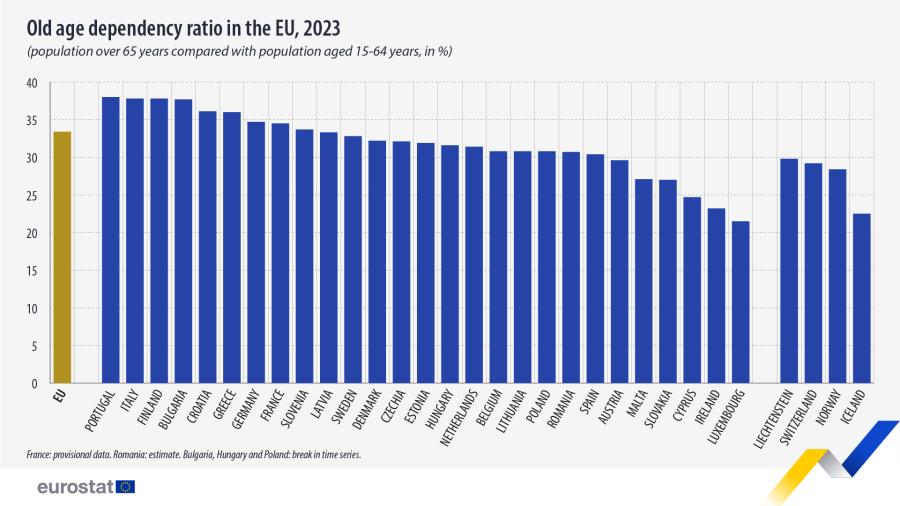EU median age increased by 2.3 years since 2013
On 1 January 2023, the median age of the EU’s population reached 44.5 years. This means that half of the EU’s population was older than 44.5 years, while the other half was younger. The median age of the EU’s population has increased by 2.3 years since 2013, when it was 42.2 years.
On 1 January 2023, across EU members, the median age ranged between 38.4 years in Cyprus and 48.4 years in Italy. Between 2013 and 2023, the median age increased in all EU members, except Malta and Sweden, where it decreased (-0.4 and -0.1 years, respectively), and Germany, where the median age remained unchanged.
In five EU countries, the median age of the population increased by 4 years or more. The median age in Portugal rose by 4.4 years, the most among EU countries. Greece, Spain, Slovakia and Italy followed, registering 4.0 years increase.
Old age dependency ratio reached 33.4% in 2023
EU’s old-age dependency ratio, defined as the ratio of the number of elderly people (aged 65 years and over) compared with the number of people of working age (15-64 years), stood at 33.4% on 1 January 2023. This indicator has increased by 5.7 percentage points (pp) since 1 January 2013 when it was at 27.7%.
The highest ratios were registered in Portugal (38.0%), Italy and Finland (both 37.8%). The lowest ratios were in Luxembourg (21.5%), Ireland (23.2%) and Cyprus (24.7%).
Compared with 2013, the largest increases in the ratios were in Poland (+10.4 pp), Bulgaria (+9.2 pp) and Croatia (+9.0 pp). The lowest in Luxembourg (+1.3 pp), Malta (+2.0 pp) and Austria (+2.8 pp).
https://ec.europa.eu/eurostat/web/products-eurostat-news/w/ddn-20240215-1

